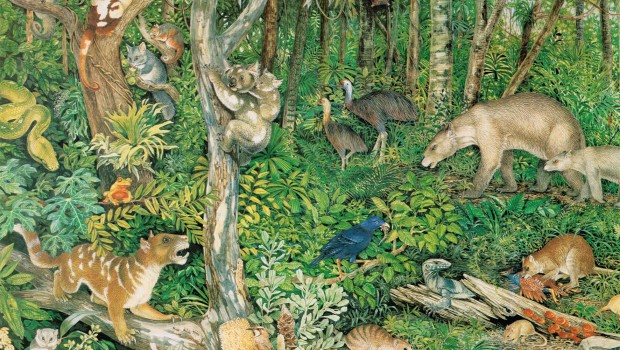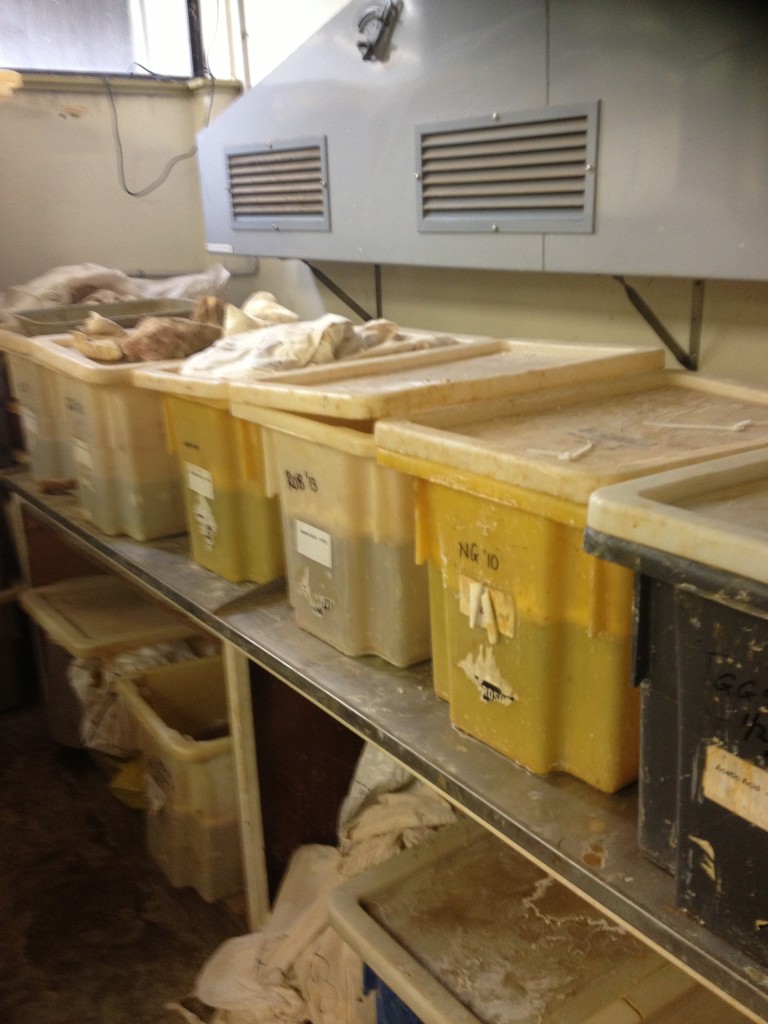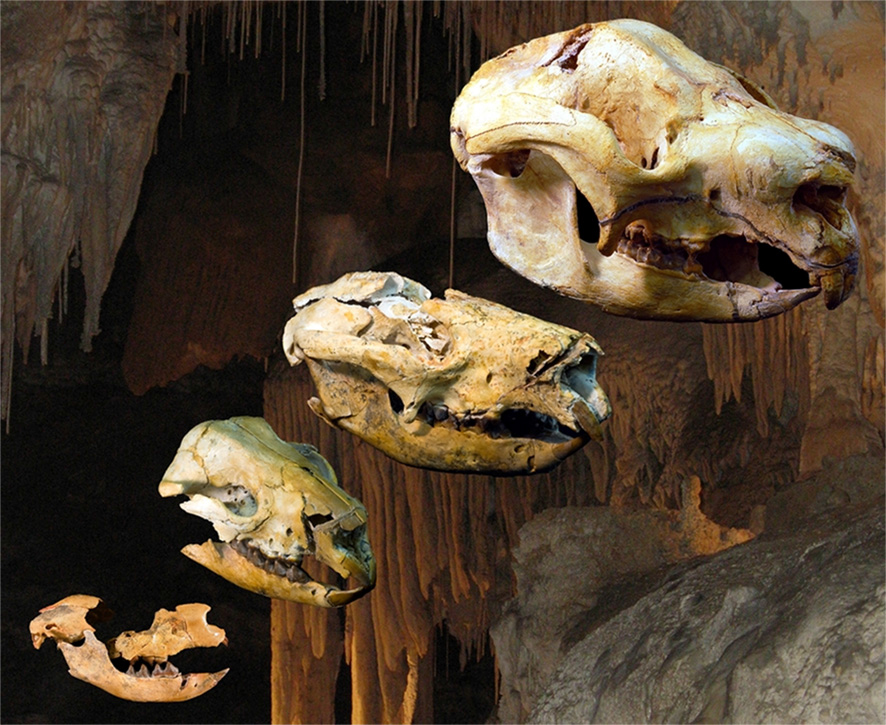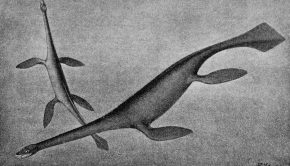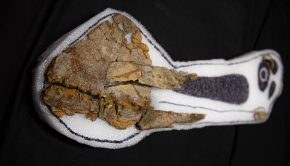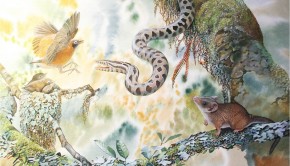Episode 25: Marsupials of Riversleigh
Continuing our look at Australia’s marsupials, we speak to Dr. Karen Black, also of the University of New South Wales. We discuss the Riversleigh fossil site, which fossils it contains, how they are preserved and what it takes to excavate them.
Podcast: Download (Duration: 31:40 — 25.4MB)
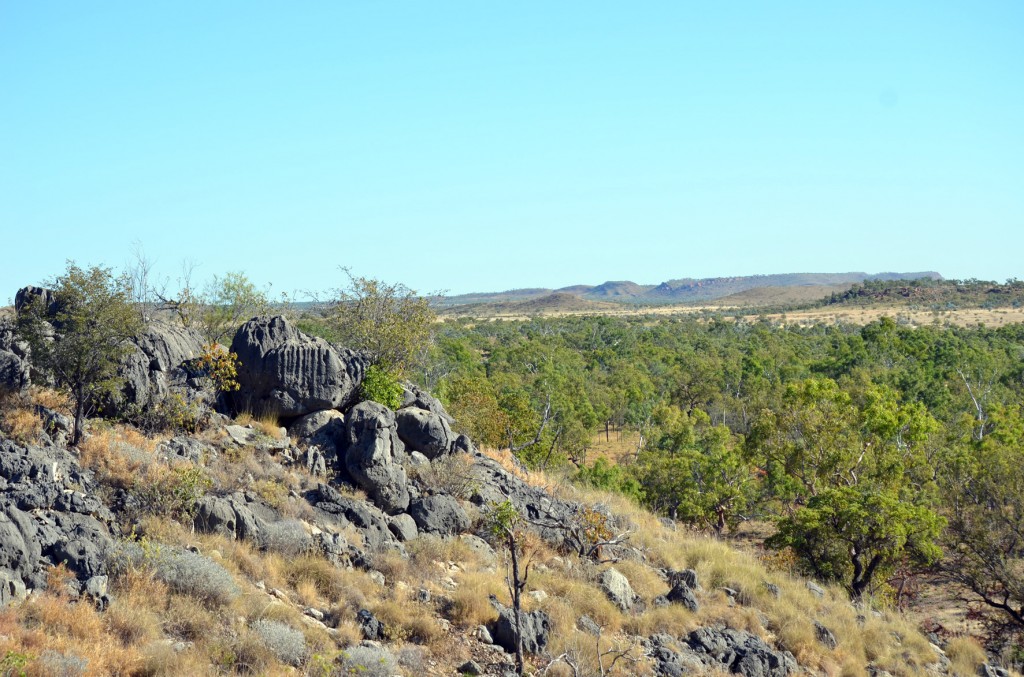
A view across the field area, which is around 40 square km and located in remote NW Queensland, Australia, about 200km south of the Gulf of Carpentaria.
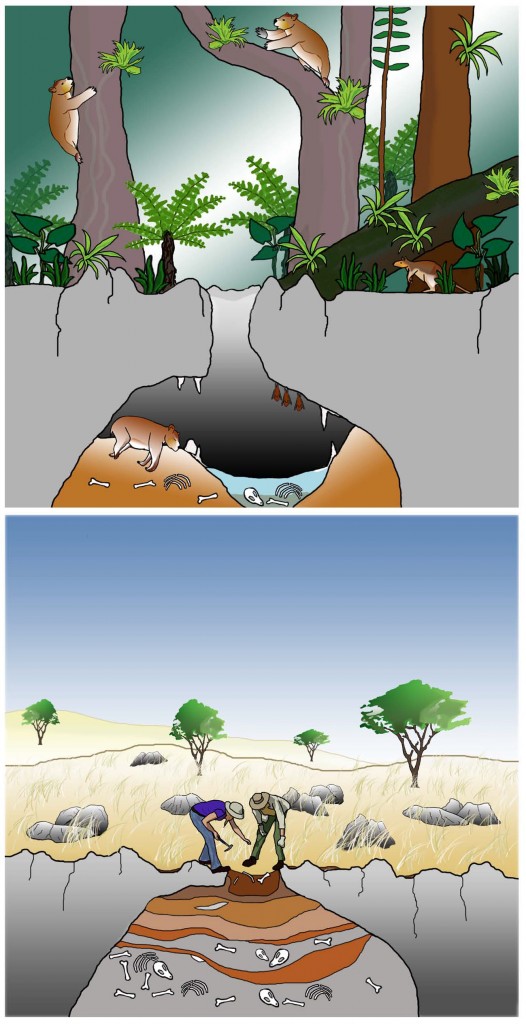
The preservation process at Riversleigh. The terrain seen during the Miocene all the way up to the present day is limestone karst. This erodes with rainwater seeping in to cracks and forming cave networks. Animals fall into the caves becoming trapped, and are relatively rapidly covered in sediment and calcium carbonate deposits from water flowing through the caves, leading to excellent three-dimensional preservation. The palaeontologists now working at Riversleigh dig through these layers to obtain fossil specimens.
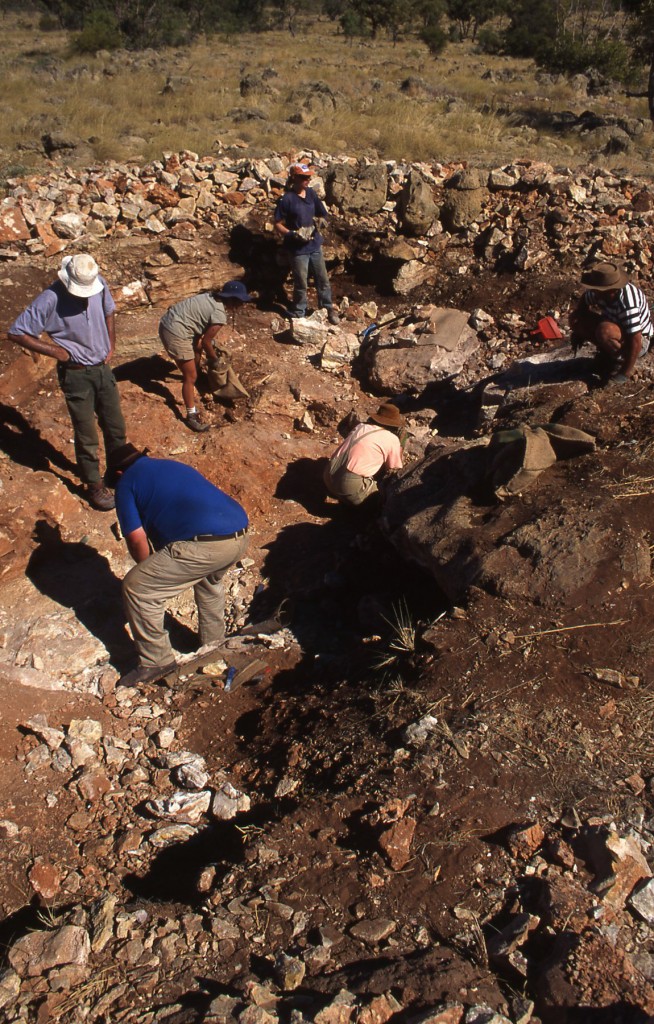
The team from UNSW at one of the Riversleigh fossil sites (AL90 Site), excavating specimens. (Photo: M. Archer)
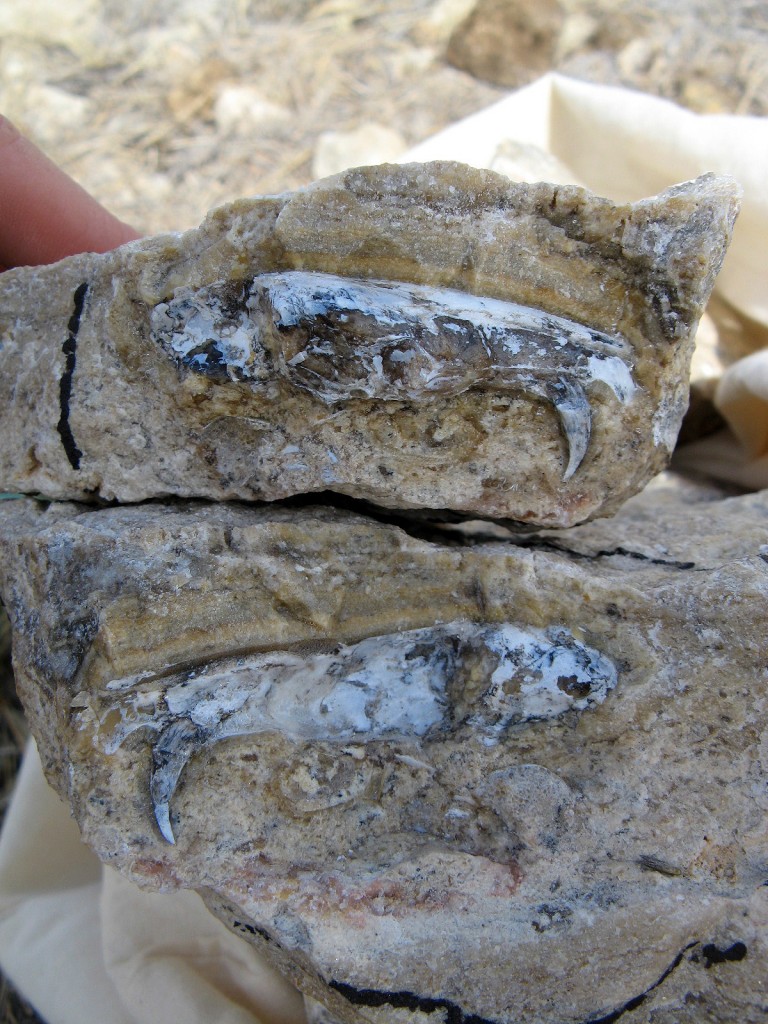
A block of limestone that has fractured through a fossil skull of a fossil bandicoot affectionately known as ‘Scrat’. Fortunately these can be carefully glued back together with polyester resin before being submerged in acetic acid baths.
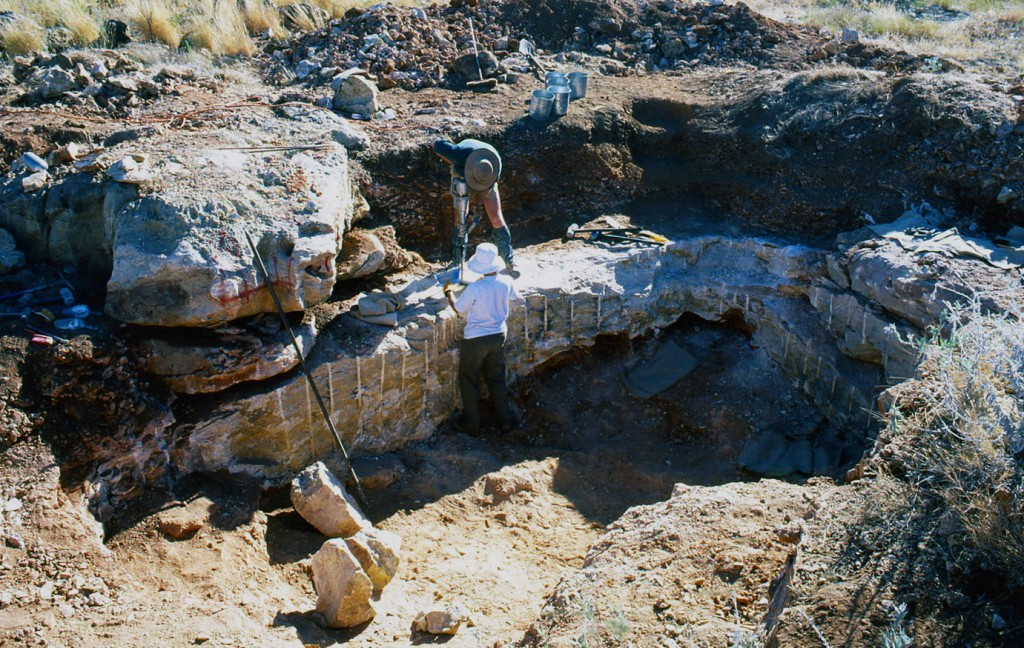
A volunteer, Lizard (Chris) Cannell uses a drill to make holes in the fossil-filled limestone which are then filled with a light explosive to section the rock into small enough blocks to be transported. (Photo: H. Godthelp)
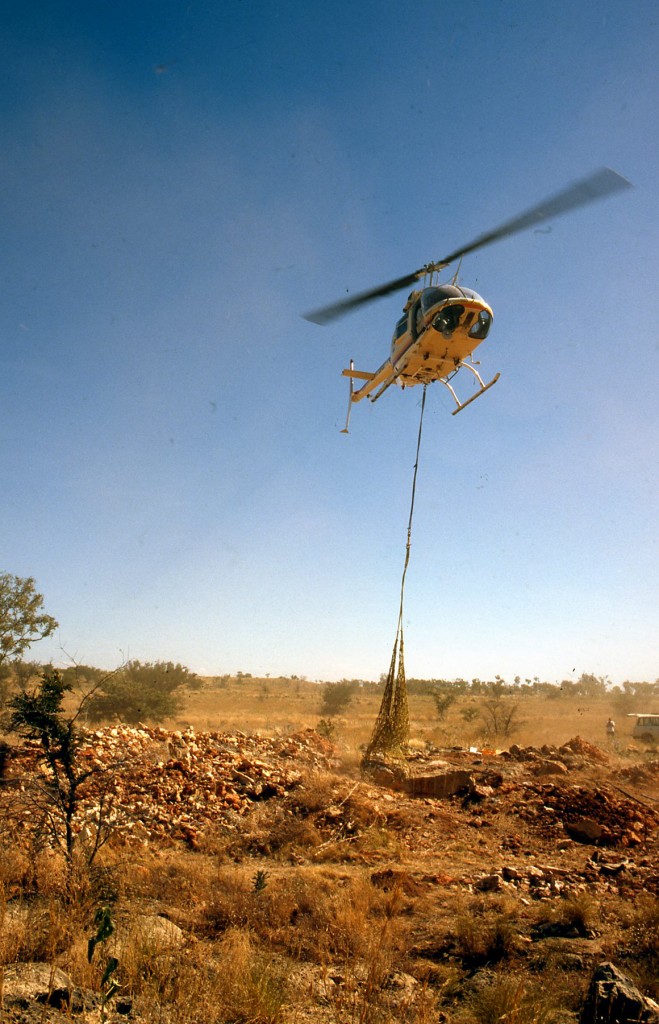
A helicopter transporting the large fossil-containing blocks of limestone from the remote fossil sites back to base camp where the blocks are then trucked back to the palaeontology lab in Sydney so that they can be prepared to remove the fossils. (Photo: H. Godthelp)
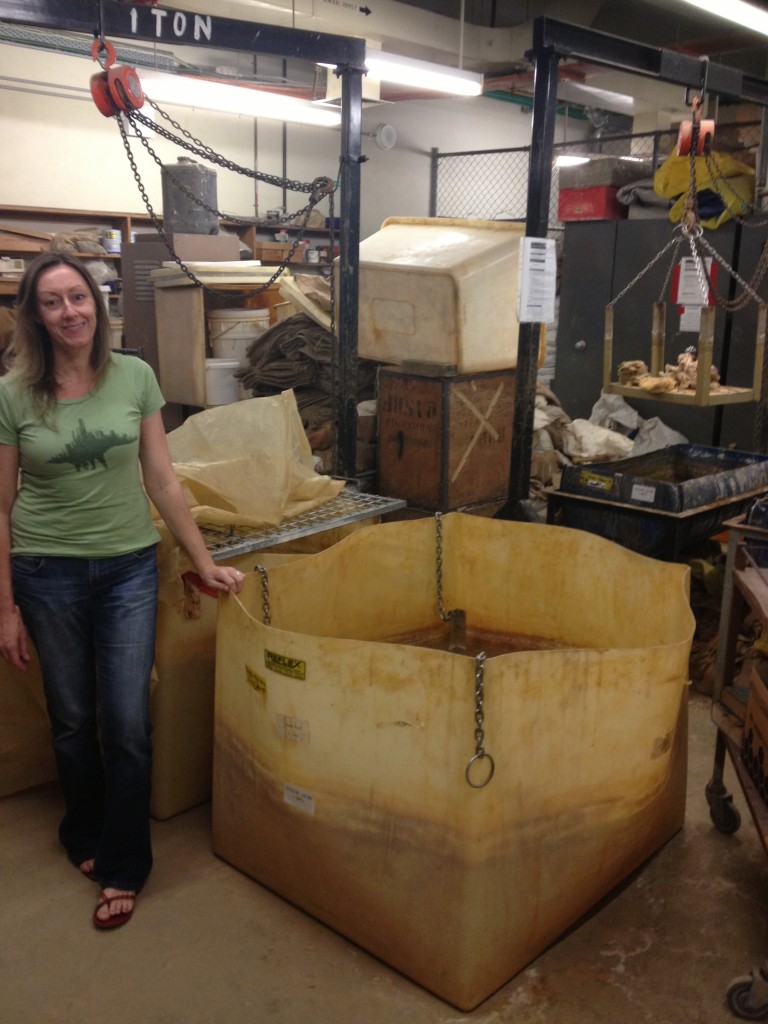
In the labs at UNSW, limestone blocks are lowered into large acid vats using gantries . Some of these blocks weigh in excess of 150 kg. Each field season Karen and the palaeontology team at UNSW and numerous voluteers excavate over 2 tonnes of fossil-bearing limestones to be processed back in the Sydney labs.
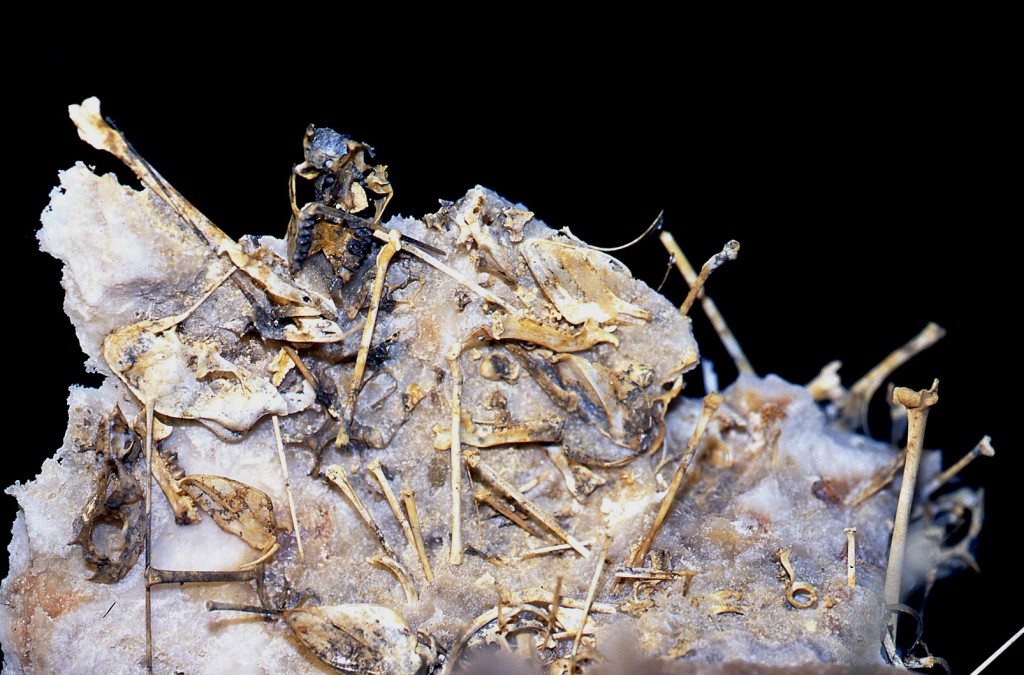
This acetic acid bath dissolves the limestone matrix without causing damage to the bones. (Photo: A. Gillespie)
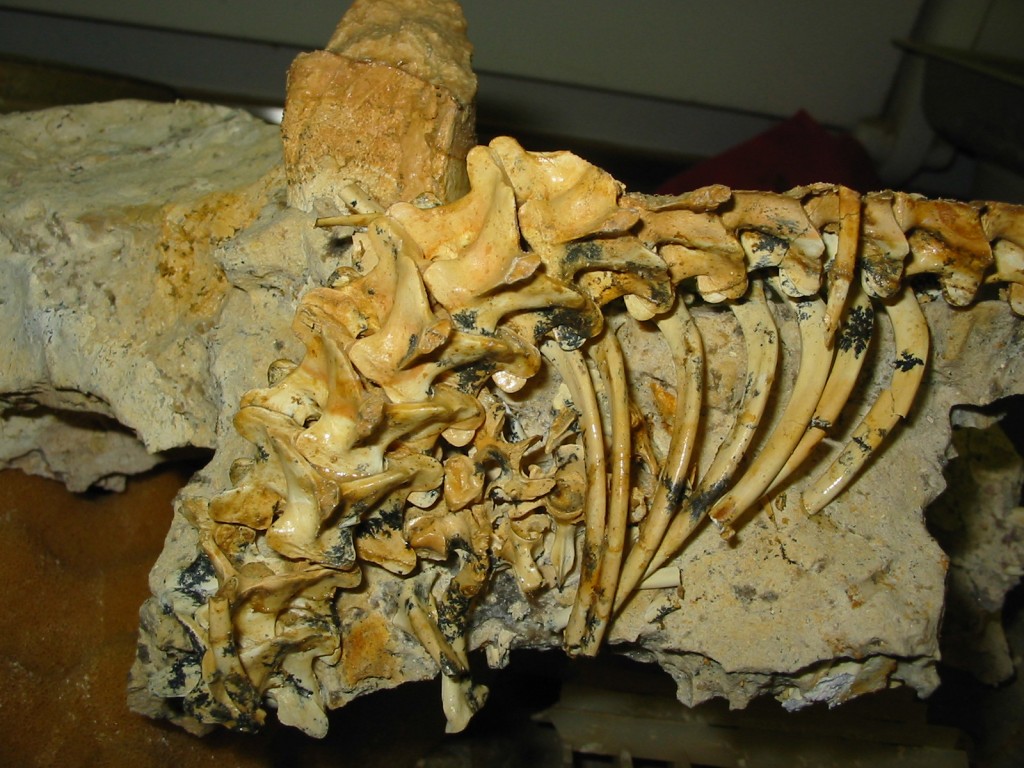
It is therefore possible to recover skeletons quicker and easier than using more conventional physical preparation techniques. Pictured here is the articulated skeleton of a 20 million-year-old snake.
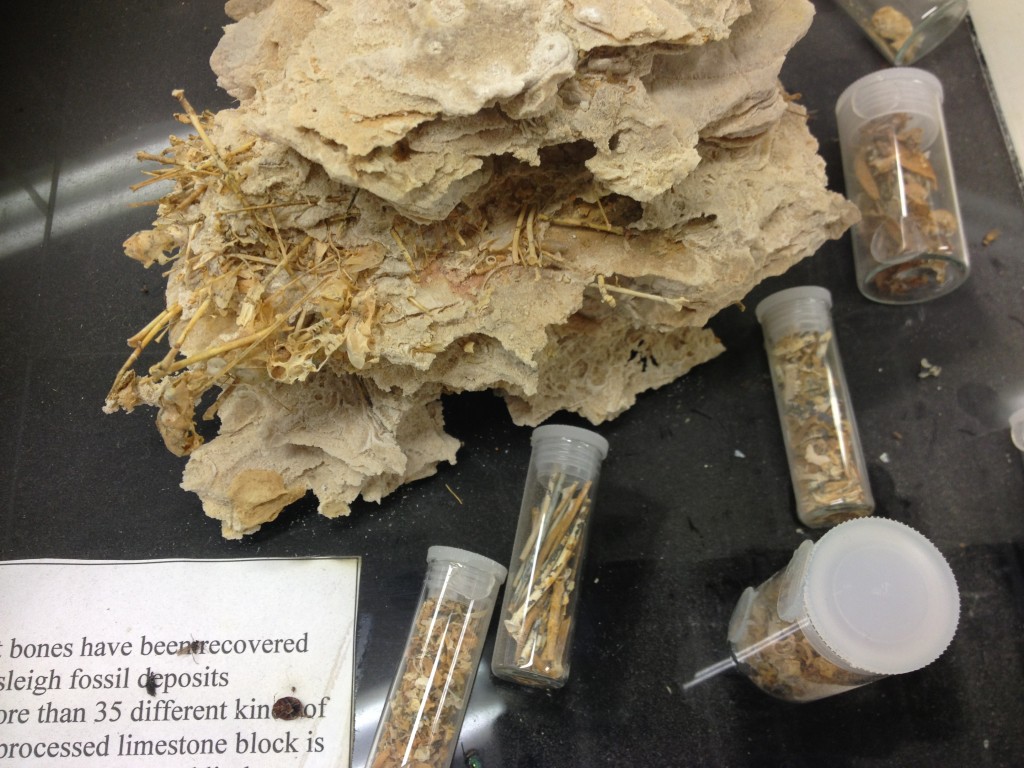
Fossil remains can be incredibly common and also very small, much of this project relies on the time and effort of dedicated preparators. Pictured here are hundreds of tiny bat bones (including skulls with teeth intact) emerging from the limestone.
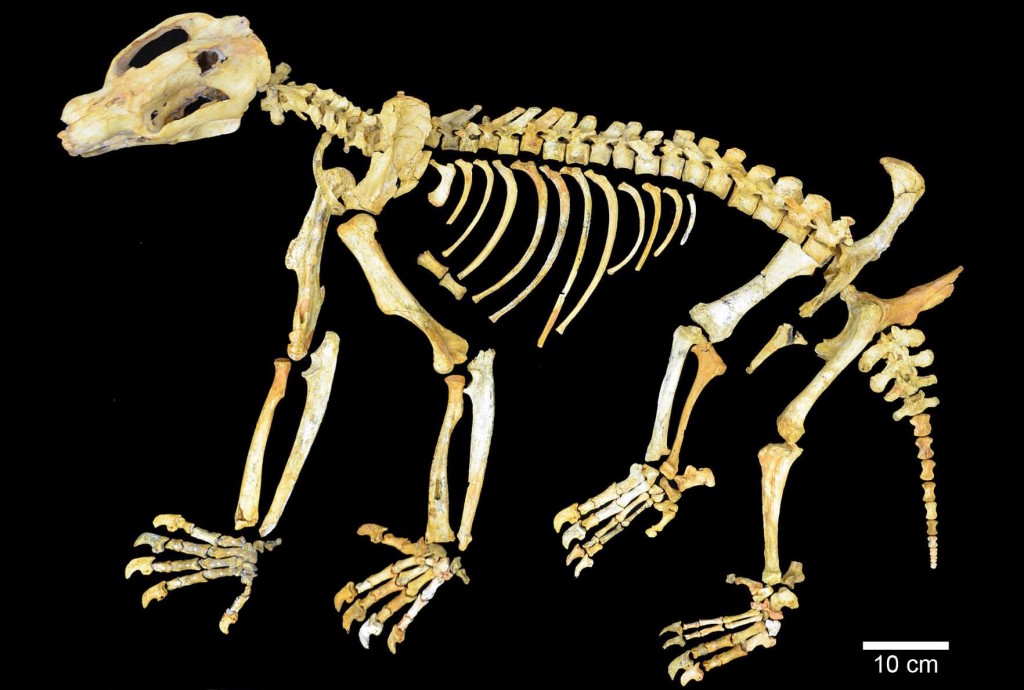
With enough effort, entire specimens can be reconstructed. Pictured here is the skeleton of a 70 kg diprotodontid marsupial called Nimbadon, recovered from a 15-million-year-old cave deposit called AL90. Diprotodontids are an extinct group of large-bodied herbivores ranging in size from 50 kg to 2.5 tonnes. They are most closely related to wombats among living groups. Most were terrestrial, but study of this skeleton surprisingly revealed that Nimbadon was tree-dwelling.
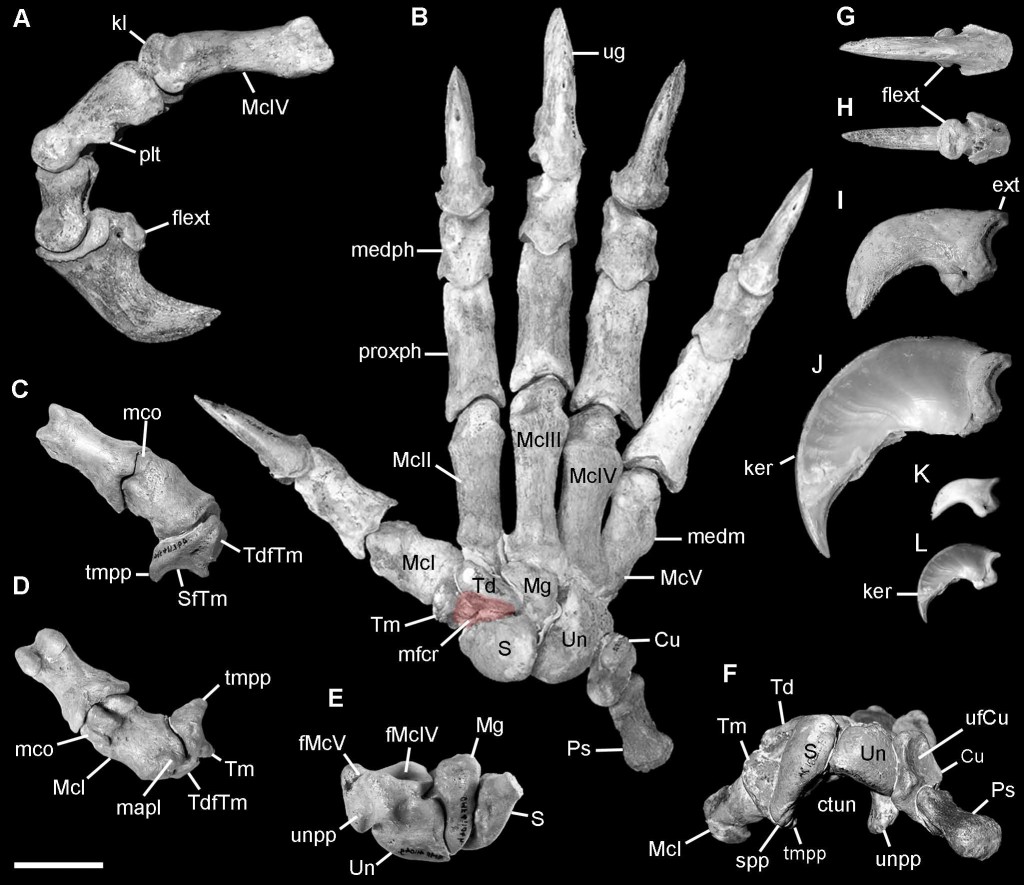
The hand of Nimbadon was relatively large for its body size, equipped with long flexible fingers, an opposable thumb and massive bark-piercing claws. These features are adaptations for climbing trees and gave Nimbadon a powerful grasp to pull its large body through Australia’s ancient rainforest trees.
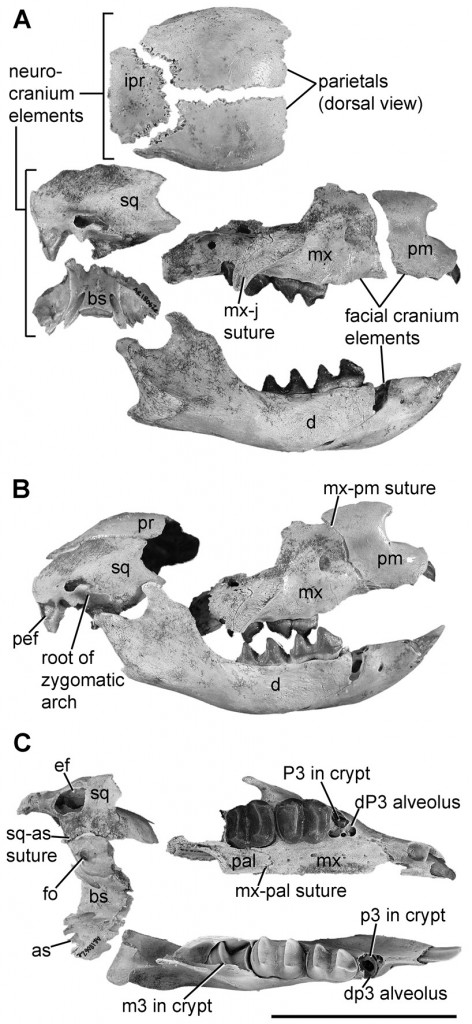
AL90 was a Nimbadon graveyard with skulls and skeletons ranging in age from pouch-young to elderly adults. Pictured here is a skull of a suckling pouch-young of Nimbadon. The animal is so young that the bones of the skull have yet to fuse together. A, unfused bones of the skull as they were recovered from the limestone; B, reconstructed skull; C, The area of the skull surrounding the teeth (right) is well-developed compared with the back of the skull (left) so that the pouch young can efficiently attach to the teat in its mother’s pouch.
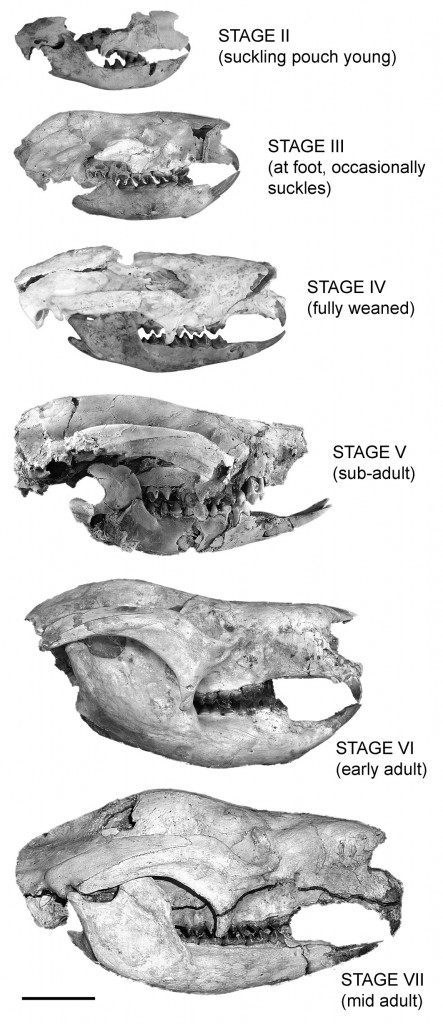
With so many exceptionally well-preserved fossils from AL90 at Riversleigh, it has been possible to observe the development (ontogeny) of Nimbadon through studying fossils of different developmental stages. Understanding this development in fossil specimens is very important due to the unique ‘migration’ of the underdeveloped young from the womb to the pouch where they can finish their development. For this journey, marsupial young, which are born at a very underdeveloped stage, being little more than the size of jelly-beans or smaller, must first develop forelimbs for the climb and possess well-developed jaws for attaching to the mother’s teat in the pouch. The Riversleigh fossils have allowed comparisons of the ontogeny between modern marsupials and marsupials living 15 million years ago.
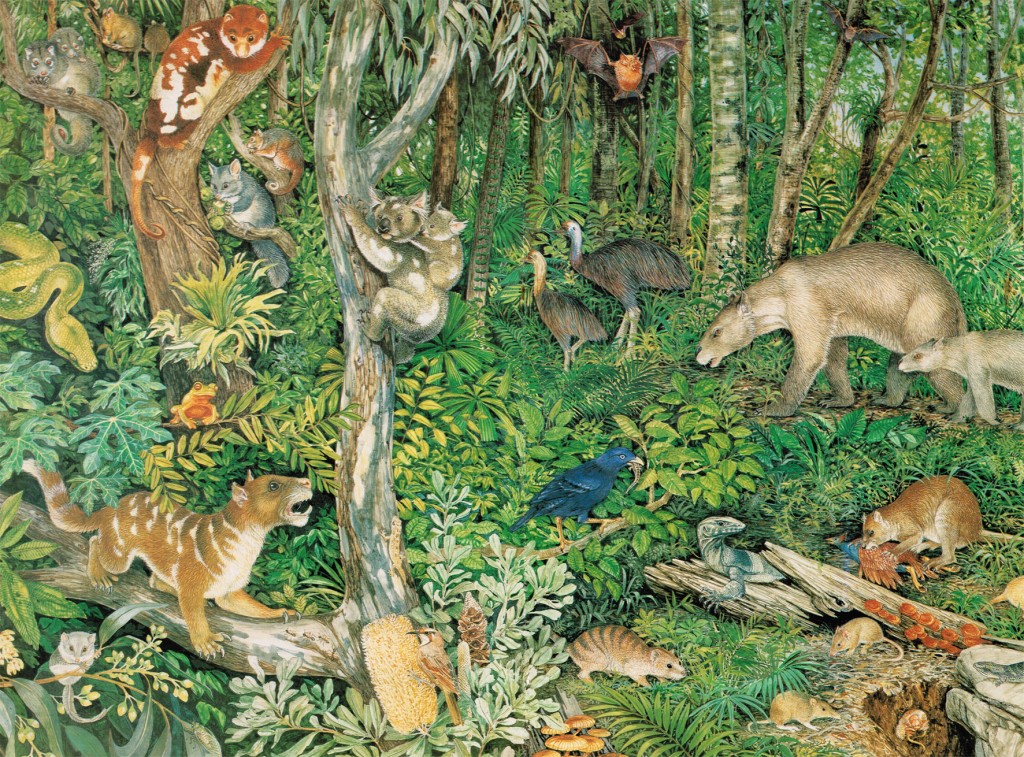
Riversleigh 15-20 million years ago was a highly bio-diverse, lush rainforest with a range strange and familiar beasts including marsupial lions, flesh-eating kangaroos, large wombat-like diprotodontids, tiny koalas and numerous possums, bats, birds, snakes, lizards and frogs. (Illustration by D. Dunphy)
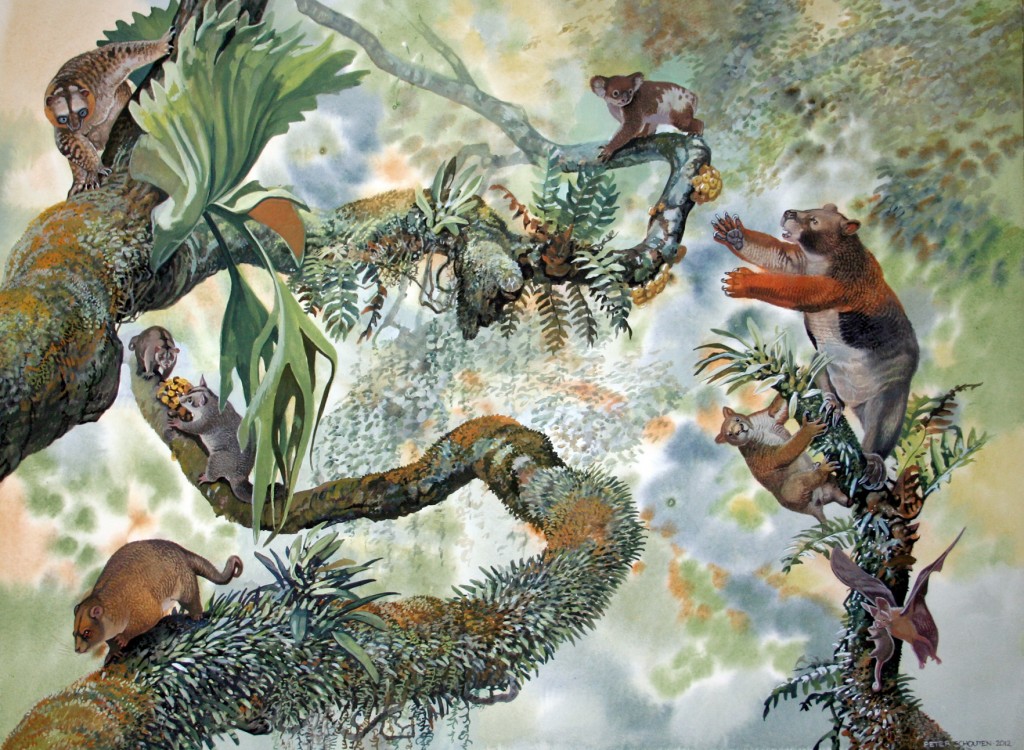
A reconstruction of the 15 million year old palaeoenvironment of AL90 Site. The c. 70 kg wombat-like Nimbadon shared the rainforest treetops with tiny koalas (one third the size of the living animal), a range of extinct possums and carnivorous ghost-bats. (Illustration by P. Schouten from the forthcoming book “The Antipodean Ark”, CSIRO Publishing)
Unless otherwise stated, all images courtesy of Dr. Karen Black.

